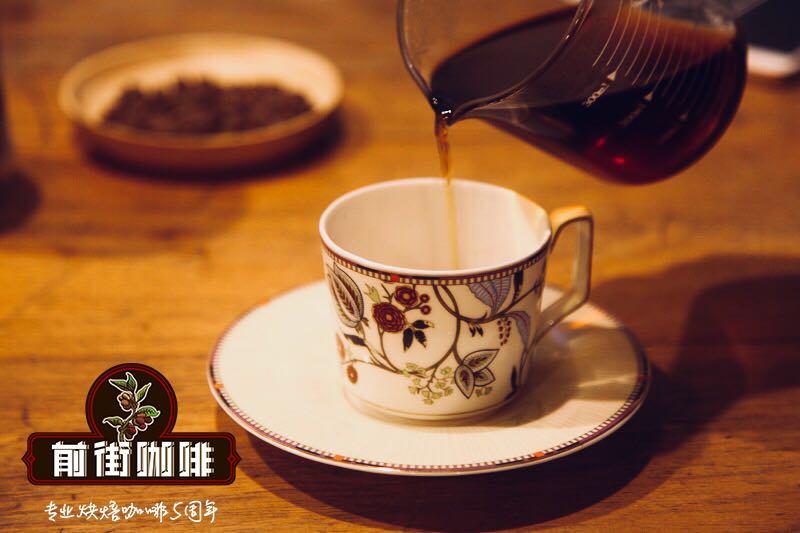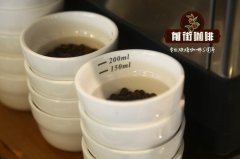The three most common fermentation methods of coffee beans Coffee beans ferment into coffee wine?

Professional coffee knowledge exchange More coffee bean information Please pay attention to coffee workshop (Weixin Official Accounts cafe_style)
Fermation is derived from the Latin fervere, meaning "churning," and describes the mild foaming or violent boiling of yeast when it acts on grape juice or wort.
Coffee fermentation
Different biological changes take place during the natural fermentation of coffee. Yeast produces enzymes and lactic acid bacteria break down the sugar in coffee pectin. The lipids, proteins and acids in sugar are degraded and converted into alcohol acidic acids. Coffee smell, color, pH changes, coffee pectin composition will also change.
At the heart of the process is fermentation.
In the fermentation process, different substances involved (coffee peel, coffee pulp, coffee pectin, bacterial species, bacterial number distribution), different environments (water and no water, aerobic and anaerobic environment, PH value environment, etc.), different drying methods and processes (container materials, natural sunlight, drying equipment, turning times, etc.) create different post-processing flavors and tastes.
The basic process of coffee is coffee growing--> green bean processing--> cooked bean roasting--> coffee brewing. However, in this link of raw bean treatment, all kinds of treatment methods have nothing to do with fermentation.
There are many fermentation methods, two of which require special attention: dry fermentation and wet fermentation.
Dry fermentation and its flavor characteristics
Coffee with pulp and pectin attached to the surface is placed in a concrete fermentation tank. Dry fermentation helps to improve the sweetness, chocolate and fruit flavor characteristics of coffee. Dry fermentation also comes with a challenge: controlling the temperature. Temperature affects the degree of fermentation, and poor temperature control can have a negative impact on coffee consistency and flavor.
Wet fermentation and its flavor characteristics
Wet fermentation is also sometimes referred to as "double washed,""double fermented,""Kenyan washing," etc. This treatment is common in East Africa and can improve purity.
"After removing the coffee rind and pulp, we soak the parchment coffee in water, which extends fermentation time and produces soft body and complex acidity, and more subtle flavors.
END
Important Notice :
前街咖啡 FrontStreet Coffee has moved to new addredd:
FrontStreet Coffee Address: 315,Donghua East Road,GuangZhou
Tel:020 38364473
- Prev

Flavor characteristics of Kenyan double washing Coffee introduction to Kenyan K72 treatment
Professional coffee knowledge exchange more coffee bean information please follow the coffee workshop (Wechat official account cafe_style) Kenyan coffee mostly grows at an altitude of 1500Murray 2100m and is harvested twice a year. Its main feature is a distinct fruit aroma, the common fruit aroma is citrus. Kenya
- Next

Coffee beans are not beans. Coffee beans are the seeds of coffee trees that plant unbaked raw beans.
Professional coffee knowledge exchange more coffee bean information please follow the coffee workshop (Wechat official account cafe_style) do you really know anything about coffee? Let me ask you a basic question: are coffee beans beans? The answer is NO. In fact, coffee beans are not beans, but the seeds of coffee fruit. The ripe coffee fruit is crimson, clustered in clusters in the coffee.
Related
- Beginners will see the "Coffee pull flower" guide!
- What is the difference between ice blog purified milk and ordinary milk coffee?
- Why is the Philippines the largest producer of crops in Liberia?
- For coffee extraction, should the fine powder be retained?
- How does extracted espresso fill pressed powder? How much strength does it take to press the powder?
- How to make jasmine cold extract coffee? Is the jasmine + latte good?
- Will this little toy really make the coffee taste better? How does Lily Drip affect coffee extraction?
- Will the action of slapping the filter cup also affect coffee extraction?
- What's the difference between powder-to-water ratio and powder-to-liquid ratio?
- What is the Ethiopian local species? What does it have to do with Heirloom native species?

